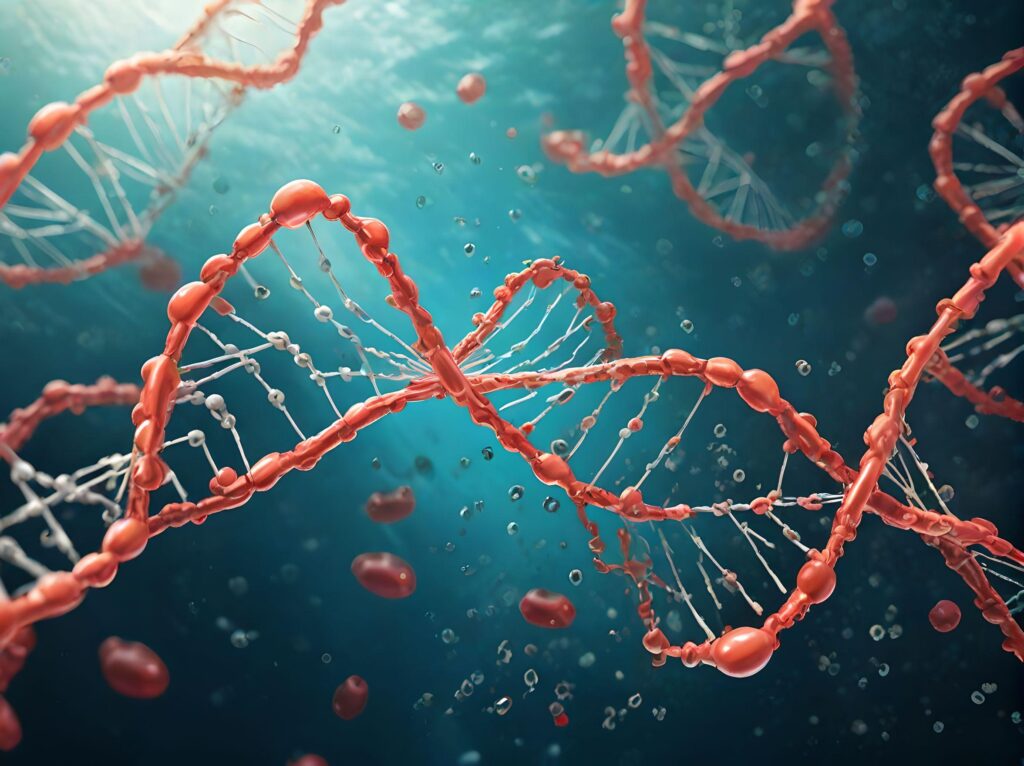The DNA alphabet is incredibly simple, but it holds the code for all life on Earth! It consists of just four letters:
- Adenine (A)
- Thymine (T)
- Cytosine (C)
- Guanine (G)
These aren’t really letters though, but rather chemical bases. The order that these bases appear in long strands of DNA determines the instructions for building the proteins an organism needs.

Think of it like a simple code. These four bases are strung together like beads on a necklace, with the order spelling out the instructions. It’s kind of like how the order of letters in a word tells you what the word means. In DNA, the code is read in groups of three bases, called codons. Each codon tells the cell which amino acid to put in a specific place when building a protein. With only four bases, you might be surprised how many different proteins can be coded for. It’s like how a small number of letters can be arranged into many different words and sentences!
There is some recent research into expanding the DNA alphabet with synthetic bases, but for now, the code of life uses these four simple molecules.
Non-synthetic DNA uses its four chemical bases (Adenine – A, Thymine – T, Cytosine – C, and Guanine – G) to encode instructions for building proteins. Here’s how it works, with 3 examples:
- The Base Pairing Rule: These four bases don’t pair randomly. Adenine (A) always pairs with Thymine (T), and Cytosine (C) always pairs with Guanine (G). This specific pairing allows for accurate copying of DNA during cell division.
- Genes and Codons: DNA is organized into genes, which are stretches of DNA containing instructions for a specific protein. Genes are further divided into triplets of bases called codons. Each codon specifies a particular amino acid, the building blocks of proteins.
- From DNA to Protein (Transcription & Translation): Here’s how the code gets expressed:
- Transcription: An enzyme reads the DNA sequence in a gene and creates a complementary RNA molecule. RNA is similar to DNA, but uses Uracil (U) instead of Thymine (T).
- Translation: Ribosomes in the cell read the RNA codon by codon and use transfer RNA (tRNA) molecules to bring in the corresponding amino acids. The order of amino acids linked together by the ribosome forms the final protein.
Examples:
- Eye Color: A specific gene determines eye color. Variations in the sequence of bases within that gene will determine which amino acids get linked together, resulting in different proteins responsible for pigment production in the eye.
- Muscle Protein: Genes code for proteins like actin and myosin, crucial for muscle function. Specific base sequences will determine the amino acid sequence of these proteins, affecting their structure and ultimately, muscle function.
- Insulin Production: The insulin gene carries the instructions to build the insulin protein, which regulates blood sugar levels. Mutations in this gene’s base sequence can lead to altered insulin production and diseases like diabetes.
By changing the order of these four simple bases, DNA creates a vast library of instructions for building the incredible diversity of life on Earth.